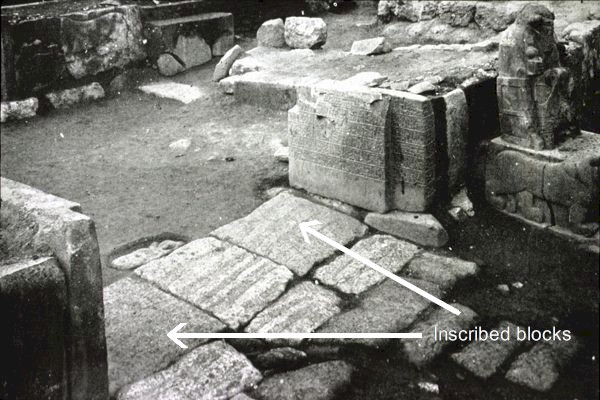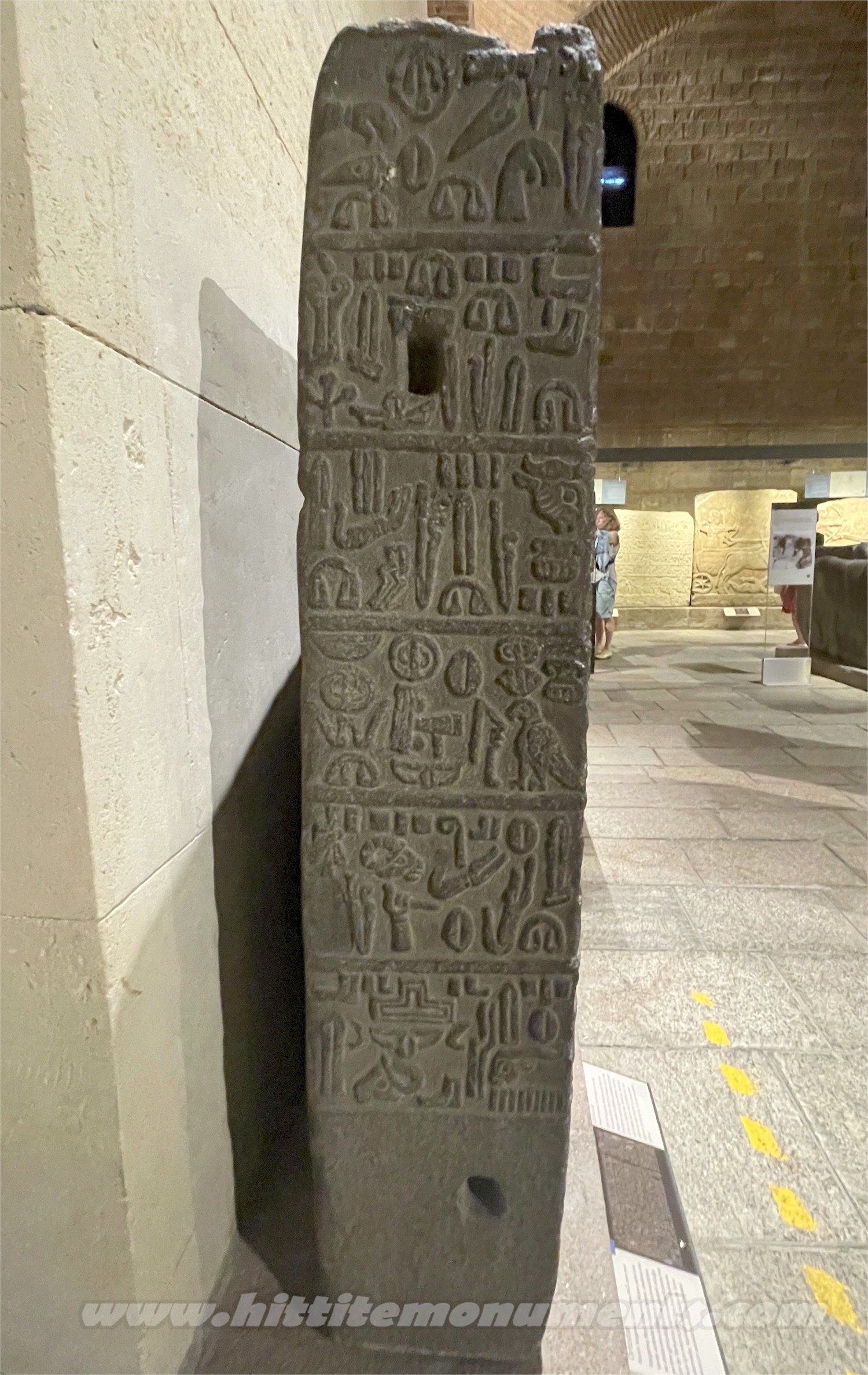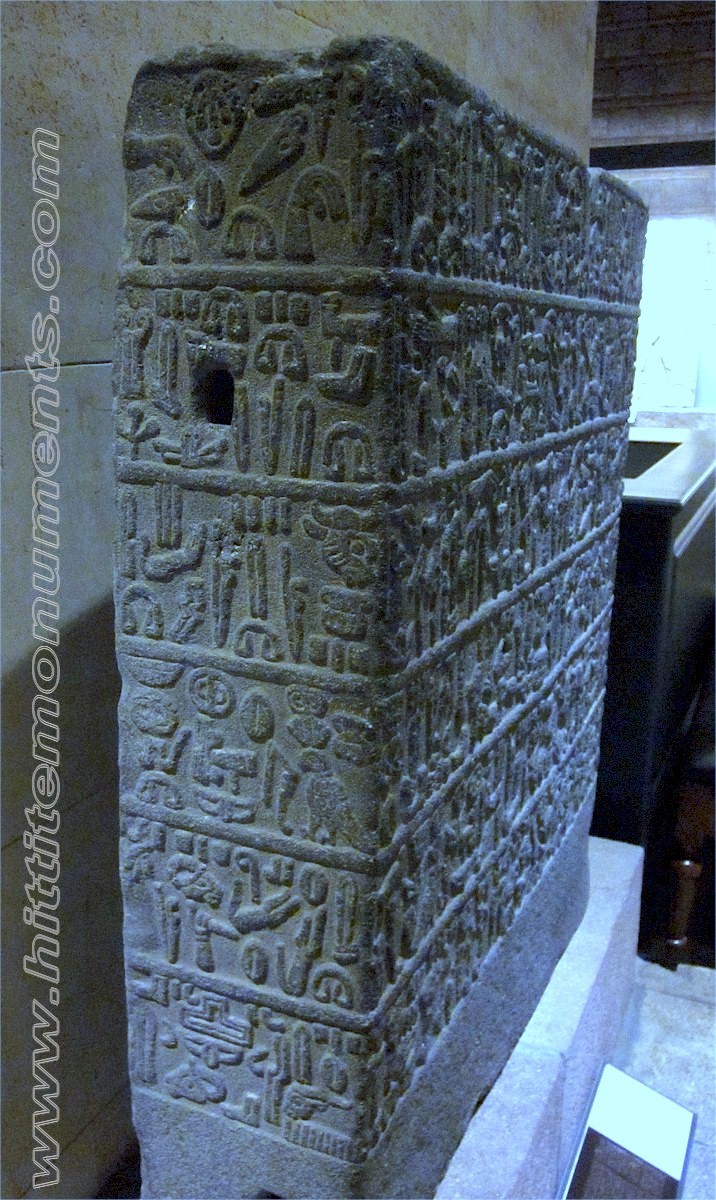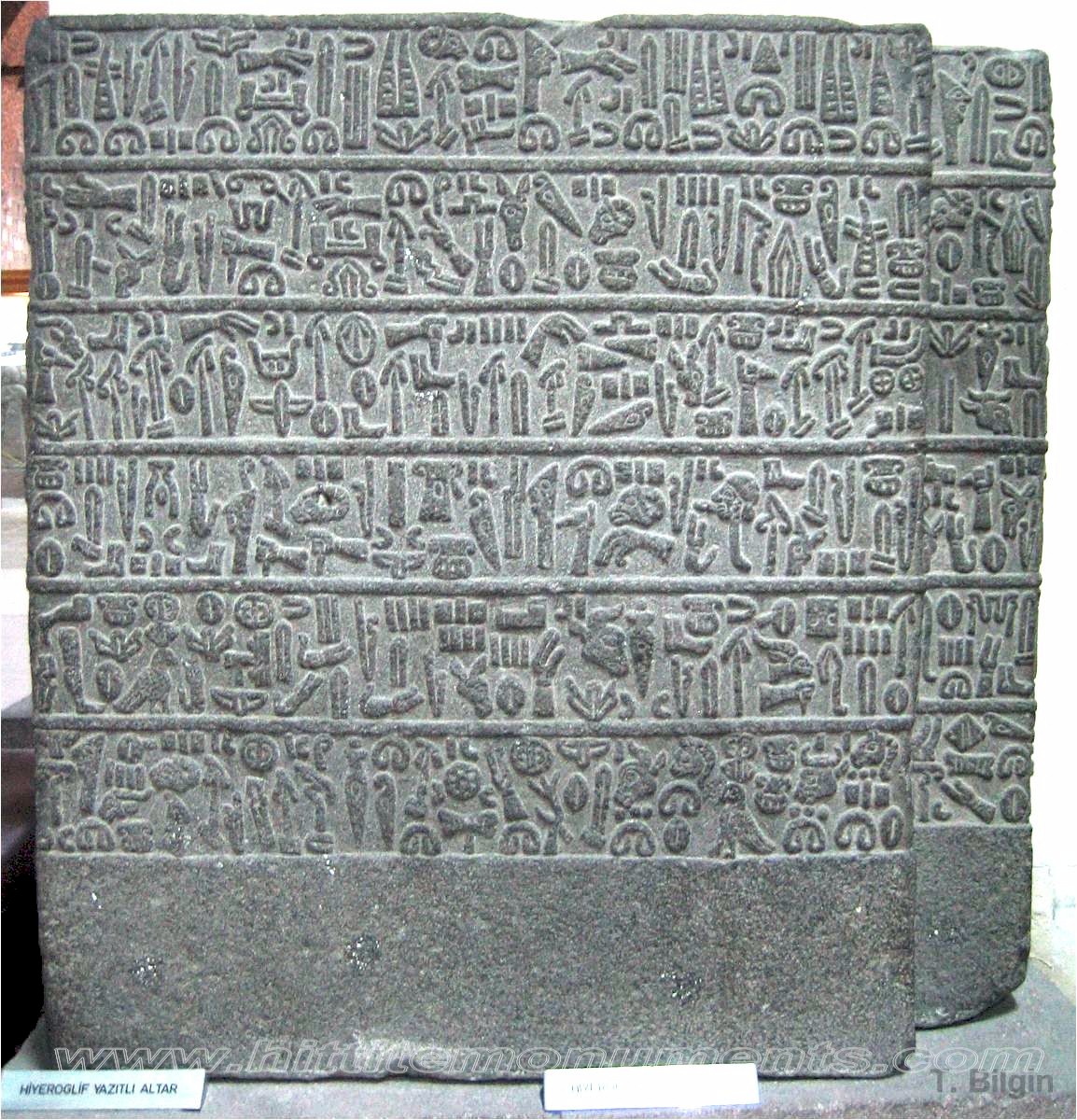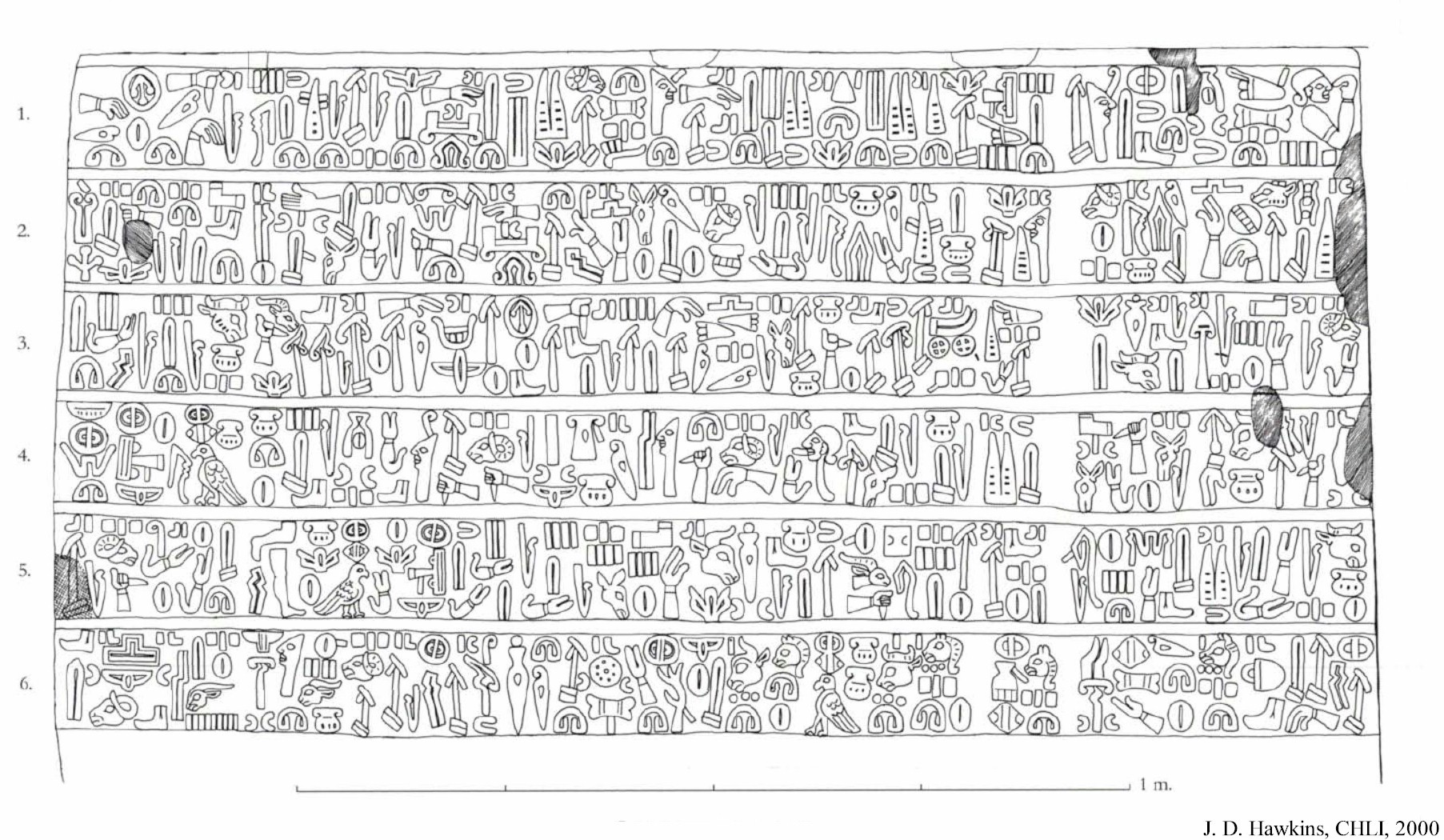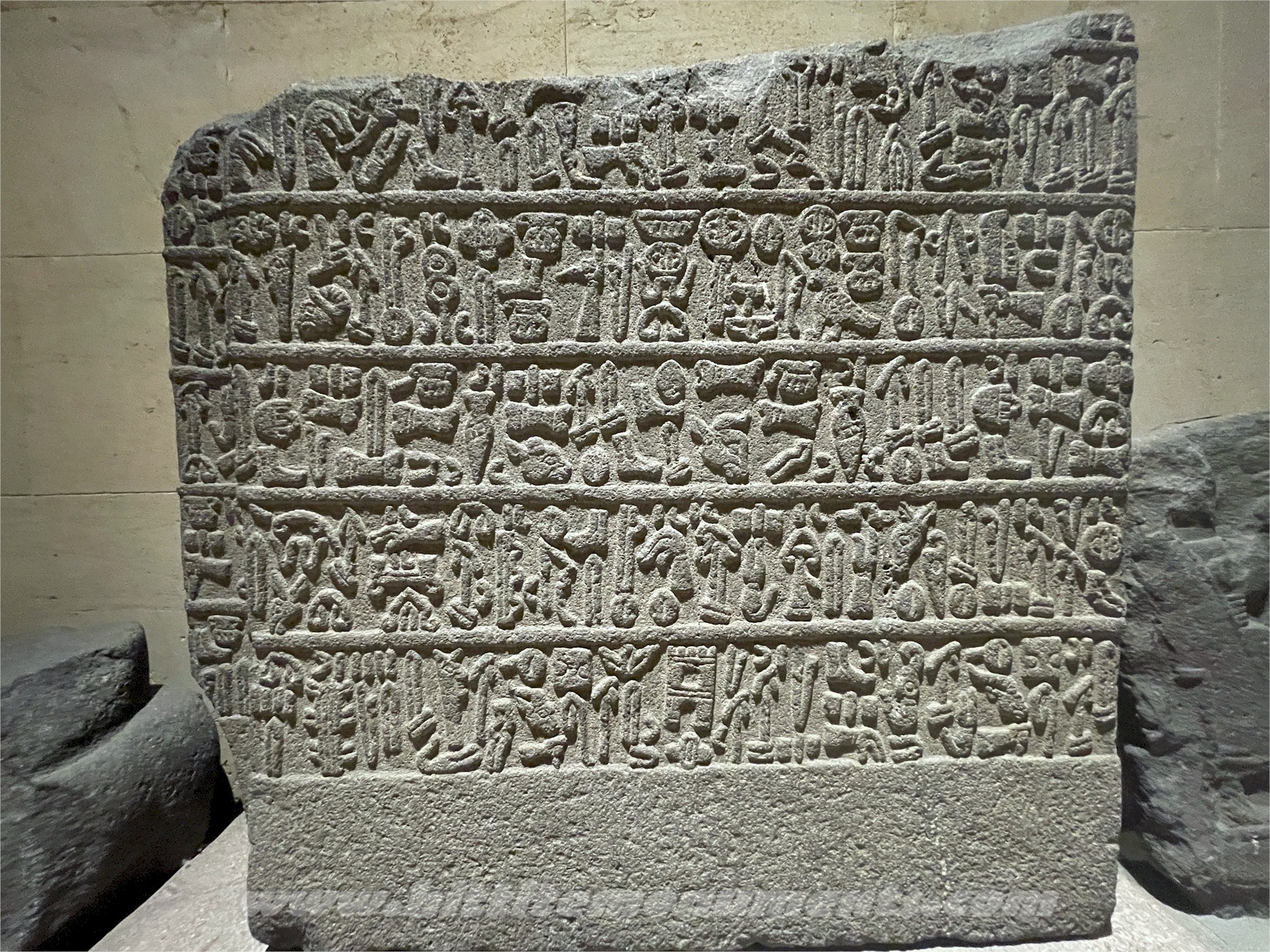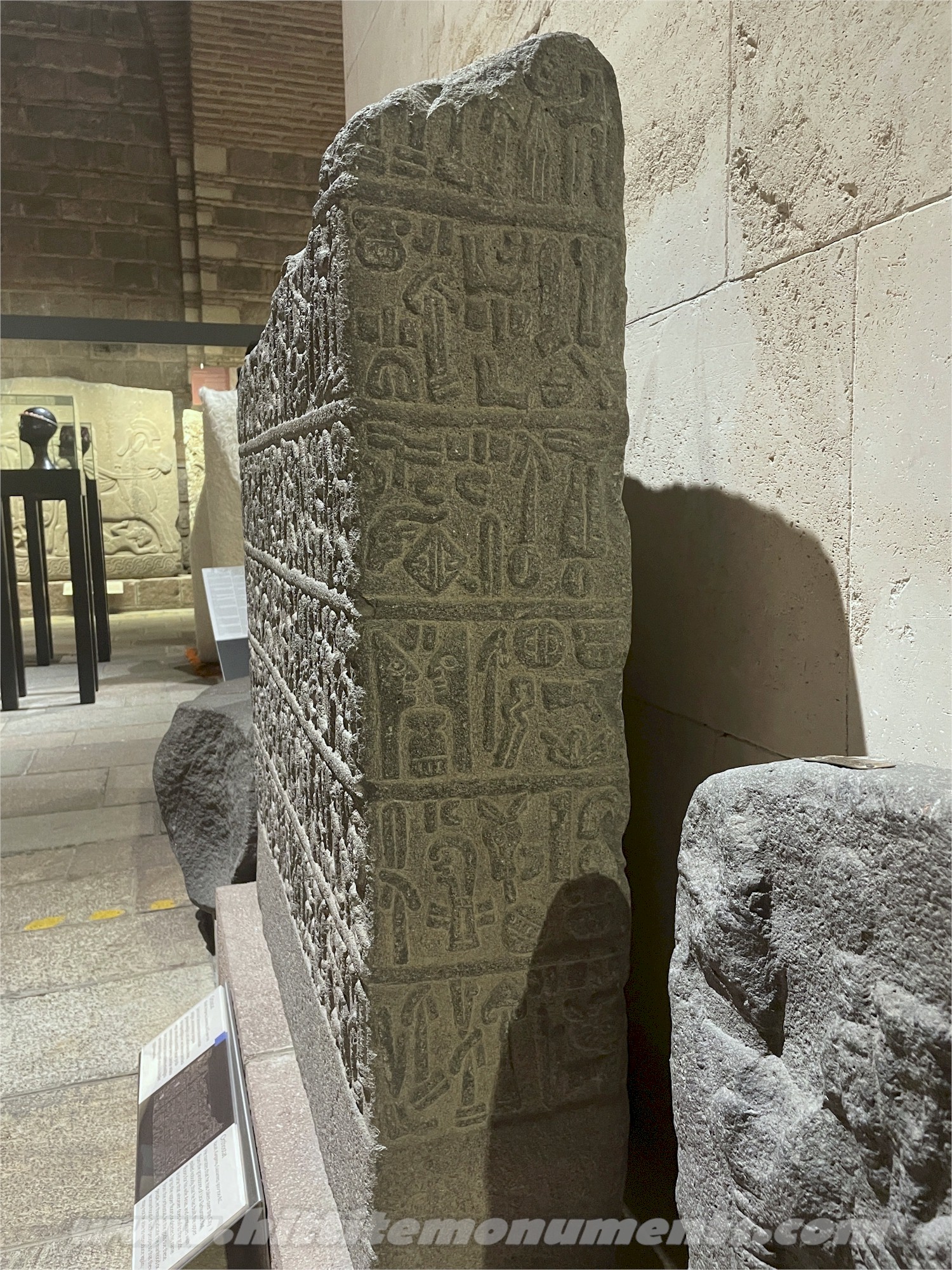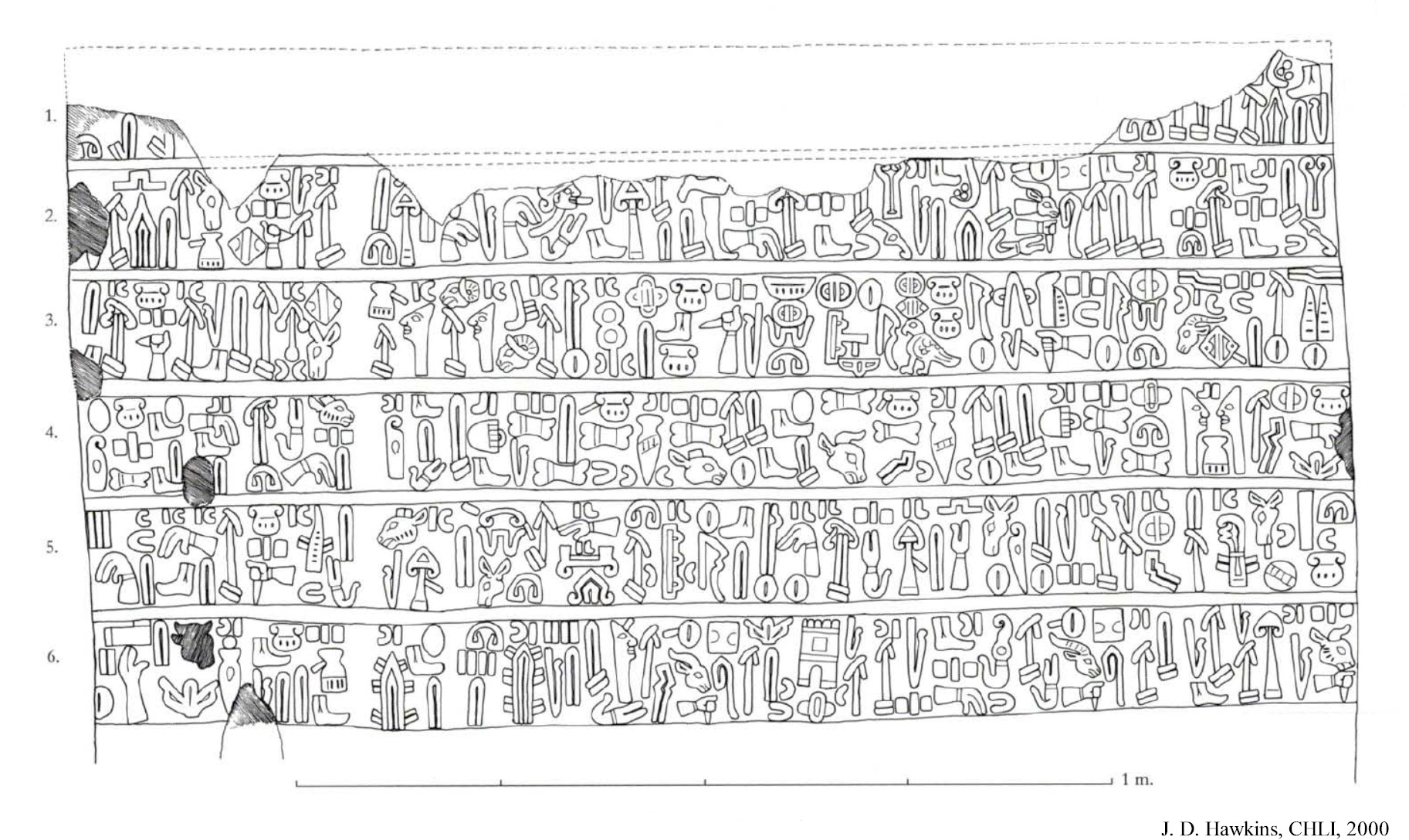TÜRKÇE
Two inscribed basalt blocks were originally from a gateway but were found as reused, lying face down at the threshold of the King's Gate. The inscriptions on two blocks form a single text (KARKAMIŠ A11b+c), which belongs to ruler Katuwa and talks about a suppressed revolt in Karkamýţ, conquests, and the construction of "upper floors." Dates to the 10th-9th century BCE and is on display in the Anatolian Civilizations Museum in Ankara.
